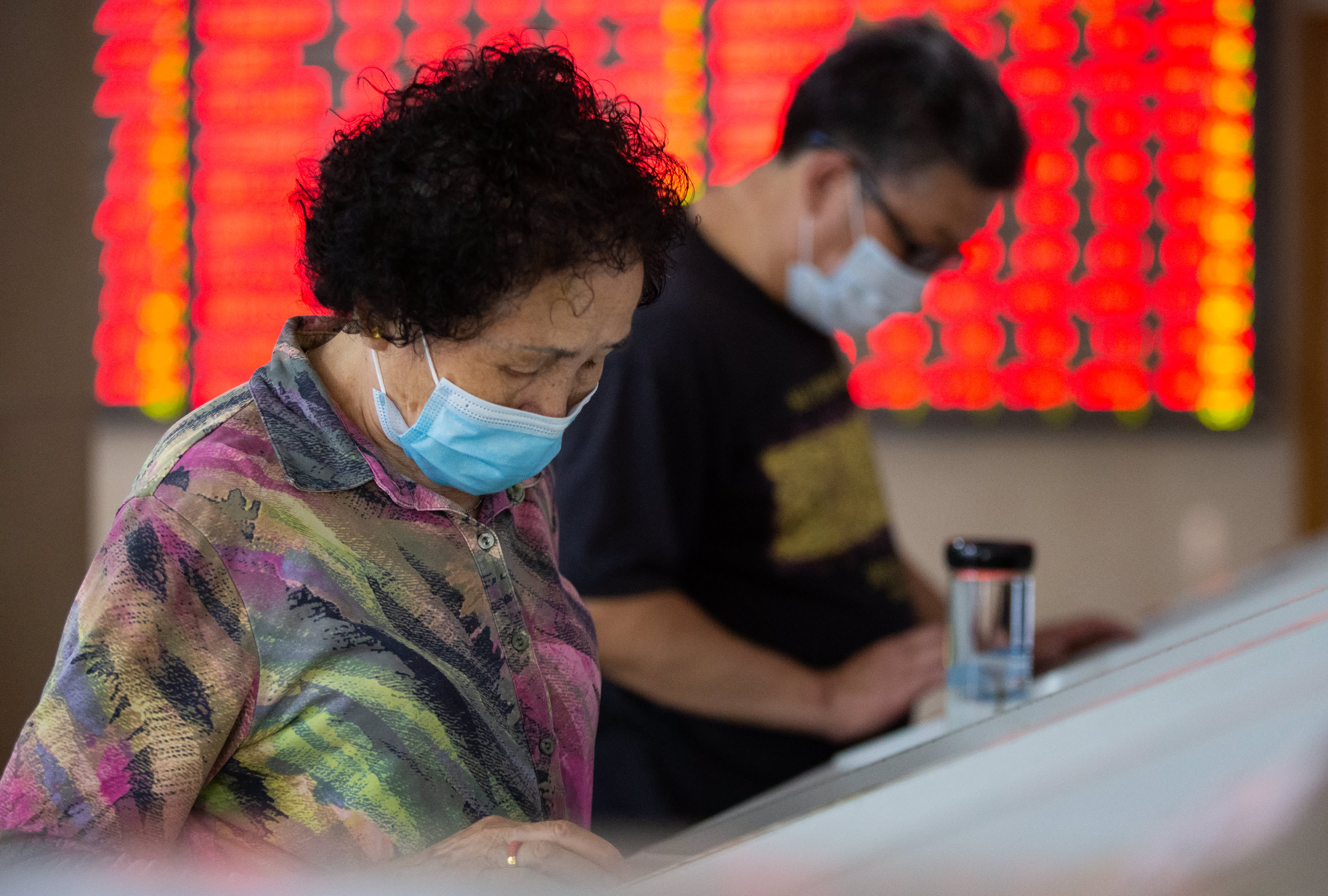Shareholders watch the stock market in a securities business hall. Nanjing, Jiangsu Province, China, 6 July 2020.
Costfoto | Barcroft Media | Getty Images
China’s recent stock market rally is raising fears that it’s being driven by retail investors indulging in leverage-fueled risky trading which caused a spectacular crash back in 2015.
Analysts say they are monitoring levels of margin trading, or the practice of borrowing money from brokerages to trade.
That comes as mainland Chinese markets surged in early July. In the first two weeks of this month, the Shanghai composite rocketed 14%. The CSI 300 index jumped more than 20%, and the Shenzhen composite soared 17%.
That rally drove the China Securities Regulatory Commission to issue a warning to investors to stay away from lenders that are illegally providing financing for margin trading. Margin trading comes with risks as investors are using borrowed money, and therefore any losses in the investments will be magnified as traders would need to pay back the interest as well.
William Ma, chief investment officer at Chinese asset management firm Noah Holdings, told CNBC on Tuesday that his firm is monitoring margin trading levels among retail investors. “Trend levels is about half of the peak, so we believe the rally will continue. At the same time, we (must be) aware that we are only 20% away from peak valuations in recent years,” he said.
“The recent stock rally is a double-edged sword for Chinese policymakers,” ANZ Research added in a Monday report, which also warned of the risks of margin trading.
On the one hand, it said, those inflows are helpful in curbing corporate debt, which has risen due to the influx of credit this year. As the coronavirus crisis hits businesses, authorities have pumped billions of yuan into the banking system encouraging lenders to extend credit and cut interest rates. As a result, however, the amount of bad loans in the country is expected to snowball.
ANZ added that as the corporate debt load eases, the fiscal pressure can be relieved as well, pointing out that the government holds a majority stake in publicly listed state-owned companies.
“On the other hand, there are growing concerns of financial risks regarding shadow margin trading, which caused the 2015 market crash,” it warned.
According to data from China Securities Financial Corporation, which refinances margin trading and has liquidity support from China’s central bank, margin financing loans in June were 33% higher than in May. In the first week of July, the margin balance outstanding in China accelerated 9% to 1.3 trillion yuan, according to a South China Morning Post report.
Some platforms illegally financing margin trading were allowing investors to borrow over 1,000 yuan ($143) to buy stocks for a deposit of as little as 100 yuan, a leverage of 10 times, according to Chinese media Caixin Global.
In 2015, there was a similar boom and bust in China fueled by illegal margin lending that saw the Shanghai composite fall more than 40% from its peak in just a few weeks, according to Reuters. More than $5 trillion was wiped off the capitalization of the Shanghai and Shenzhen markets after they peaked in June in that year.
Chinese state media earlier this month also warned investors to respect the market and manage risks.
“The tragic lesson of abnormal stock market volatility in 2015 remains vivid, cautioning us that we must promote a healthy and prosperous stock market in a correct posture,” the China Securities Journal said in an editorial.
